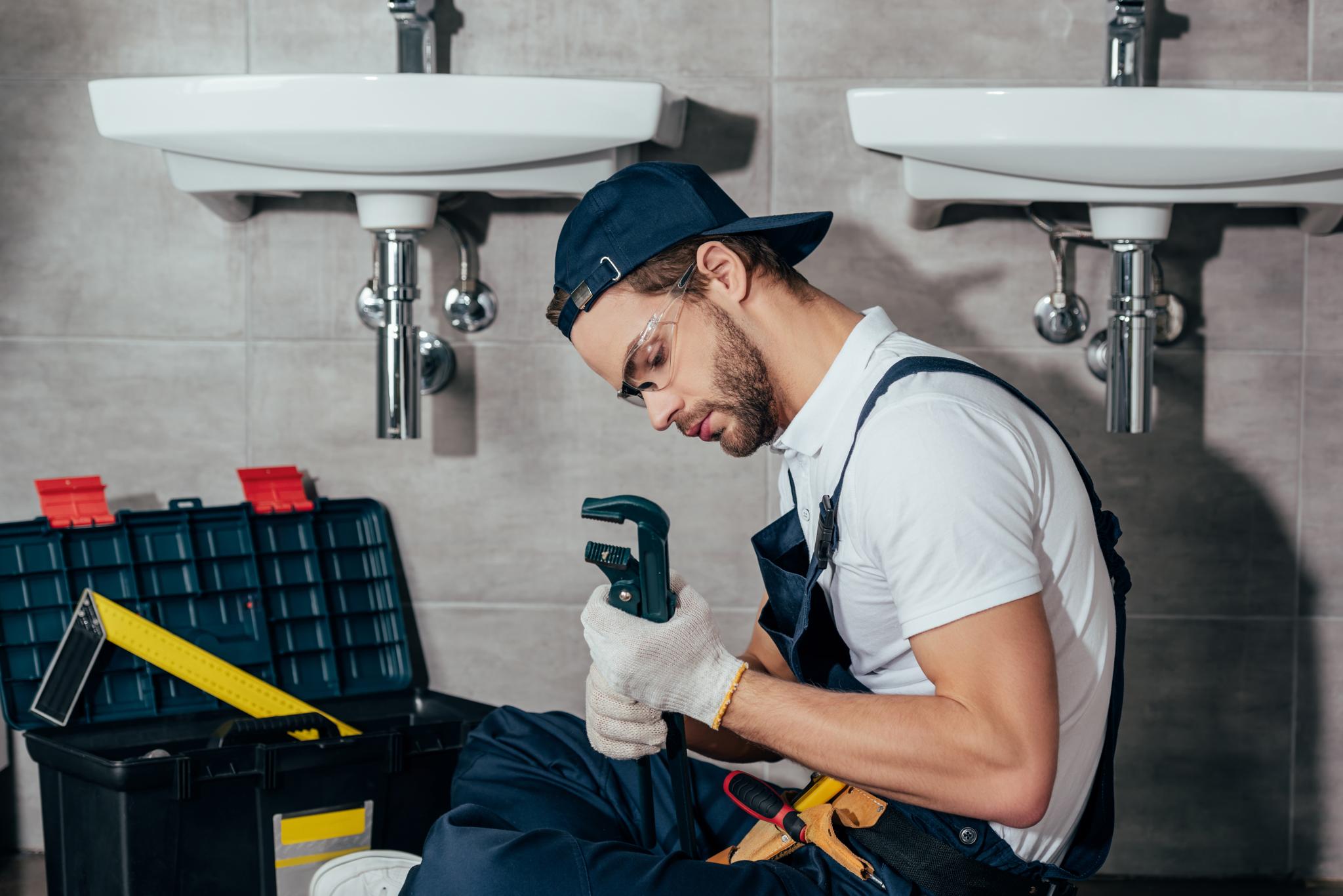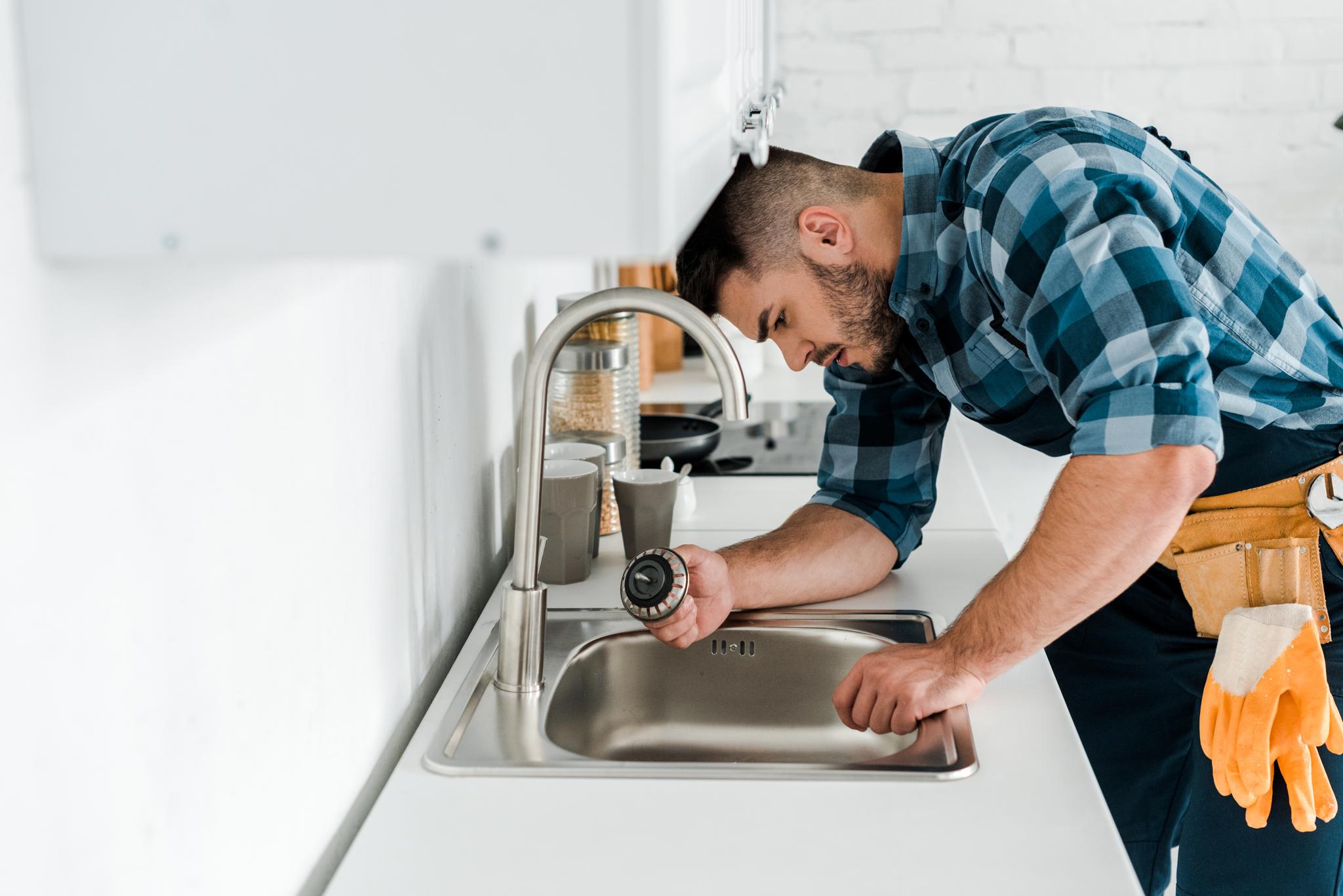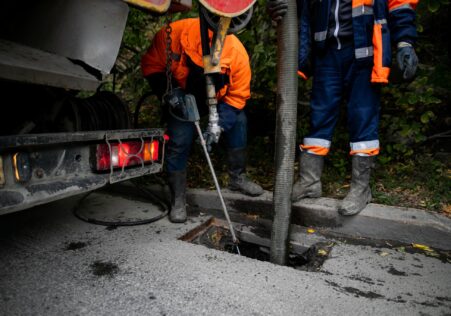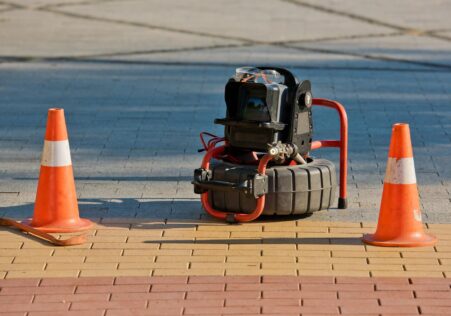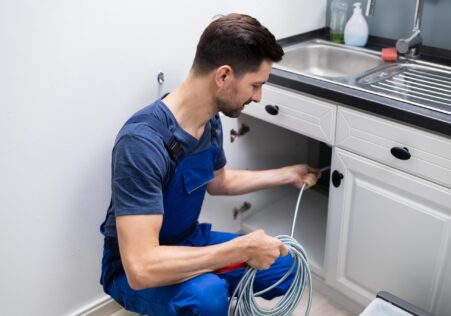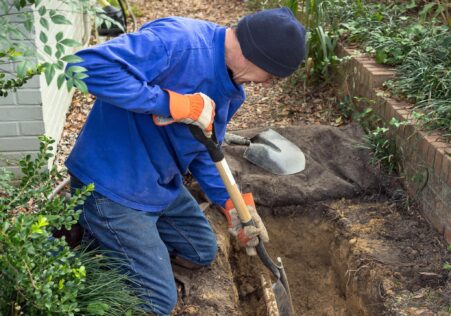What to Do When Your Toilet is Blocked: A Step-by-Step Guide

Toilet blockages can occur anytime and are a common household issue. They can be uncomfortable messy and uninspiring and requires immediate attention. However, you don’t always have to call an plumber immediately. In this blog, we will guide you through simple steps to get your toilet unclogged in no time.
Key Takeaways
- Toilet blockages can be cured by using simple tools like a plunger baking soda
The tools you’ll need
Before we start it’s important to be prepared with these tools at hand:
- Rubber Gloves
- Plunger
- Baking Soda and Vinegar (Optional)
- A Wire Coat hanger, or a Plumber Snake (Optional)
Step 1: Switch off your water source valve.
The first thing you should do when facing a clogged toilet is to turn off water valves behind the toilet. This step ensures that no more water enters the tank while you work on unclogging it. The valve is usually found near to the base of tank, on the other side.
Step 2: Make sure you are protected with rubber gloves.
You must protect your hands from potential bacteria or germs present in your toilet by wearing rubber gloves prior to making use of any tool to clear the toilet.
Step 3: Use a plunger.
A plunger is without doubt the most effective tool to use for clearing up blocked toilets. Start by pushing down to the plunger, until air is released, then place it in the hole in your toilet bowl. Begin to plunging continuously up and down for approximately 20 minutes. The suction caused through plunging back and forth will remove any blockages.
Tips:
- Be sure to use a powerful but controlled movement.
- Fill in holes around sinks and shower drains if close enough to stop the pressure of air from escape as you plunge.
Step 4: Try baking soda and vinegar mixture.
If plunging doesn’t work then try this alternative method add half a cup of baking soda and a cup of vinegar into the toilet bowl. Allow the mixture to settle for around 15 minutes. The mixture will start to fizz but when it ceases to fizz you can pour hot water down (not overly hot) to flush out the blockage.
Step 5: Use a coat hanger with wire or plumbing snake.
If plunging, baking soda or vinegar methods have failed, then it is time to use a wire coat hanger or plumbing snake. Make sure you straighten your coat hanger’s cord until you have a long thin wire with hooks that are bent at one end, or you can use to use the plumbing snake which was specially designed to clear drain clogs. Insert the tool into the drain hole in your toilet and then twist around, twist, push or pull until you feel resistance. there’s usually a blockage occurs. Gently try to break up any blockages using back-and-forth motion without causing damages in your drainpipe.
Note:
- Don’t push or pull actions too hard, as they could result in more damage.
Step 6: Restart the water supply and test the results.
Once you’ve removed any obstructions, it’s vital to turn on the supply of water on your toilet. Then flush it several times to ensure that everything is running smoothly!
| Tools | Description |
|---|---|
| Rubber Gloves | Hand protection from potential bacteria or germs present in the toilet bowl. |
| Plunger | Most effective tool for clearing up blocked toilets. Press firmly over the hole in your toilet bowl and plunge vigorously up and down for about 20 seconds. |
| Baking Soda and Vinegar | Mixture to use if plunging doesn’t work. Pour half a cup of baking soda and one cup of vinegar into the toilet bowl. Let this mixture settle for about 15 minutes, then pour hot water down (not boiling) to flush out the blockage. |
| Wire Coat Hanger or Plumbing Snake | Tools to use if both plunging and baking soda/vinegar methods have failed. Straighten the wire coat hanger until you have a long thin wire with a hook bent at one end or use the plumbing snake, which is designed specifically for clearing drain clogs. |
FAQ
How do I know when my toilet has become blocked?
The most obvious indicators of a clogged toilet is when the water fills up to the brim after flushing. You may also notice that water drains away in a slow manner, or hear the sound of gurgling out of the bathroom.
What can I do if my toilet is blocked?
If you think your toilet is blocked be sure to avoid flushing it again as this can result in flooding. Instead, shut off the supply of water to the valve on the side of the toilet. Then make use of a plunger and remove any blockages. If this fails, call Sydney Blocked Drains Plumber for professional help.
How can I stop my toilet from getting blocked?
Yes! There are several actions you can take to stop your toilet from becoming blocked. One of them is to avoid flushing non-degradable products like Wet wipes, sanitary products or cotton wool into the toilet. It is also important to avoid spilling oil or grease down the drain, which could cause solidification and block pipes.
When should I call an experienced plumber to fix the problem of a toilet that is blocked?
If you’ve tried to flush your toilet, but it does not unblock, or you suspect that there’s an issue in your plumbing system causing frequent blockages, it’s time to contact a professional plumber like Sydney Blocked Drains Plumber . We’ve got years of experience with all kinds of plumbing problems that we can quickly detect and resolve any issues without causing any disturbance to the home.
When should I have my drains cleaned?
It is recommended that you get clean your drains by a professional like Sydney Blocked Drains Plumber every 1-2 years. This can prevent blockages and keep your plumbing system operating smoothly. If you regularly encounter blockages in your drains or slow draining water, despite trying to avoid clogging them, then cleaning your drains every year would be beneficial.
These procedures are fairly easy to carry out in the majority of cases, and these products are easily available in homes. If you’re facing a blocked toilet, prior to getting anxious after trying all the strategies, you should contact Sydney Blocked Drains Plumber ‘s expert plumbers located in Sydney , if you’re looking for professional help with your blocked toilets.
Additional Information
- Avoiding Clogged Drains: Tips for Homeowners
- CCTV Drain Inspection: The Future of Drain Cleaning Industry
- The Pros and Cons of Clearing Blocked Drains Yourself or Hiring a Professional
- Why Trenchless Pipe Relining is the Future of Condominium Plumbing
- Why Regular Drain Cleaning Should Be Part of Your Home Maintenance Routine
- DIY Tips for Unclogging Your Shower Drain Without Harsh Chemicals
- Don't Let These Common Mistakes Clog Your Pipes
- Tips to Understand When it's Time to Pick Up the Phone for Professional Drain Cleaning
- Future-Proofing Your Plumbing System with CCTV Drain Inspection
- CCTV Drain Inspection: An Effective Way to Prevent Future Plumbing Issues


